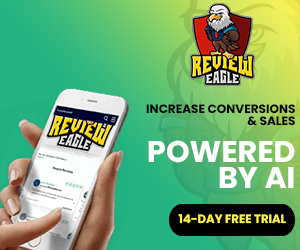Online marketplace is more saturated than ever before, it can be challenging for businesses to stand out among the noise and capture the attention of their target audience. However, there is a powerful tool that has been proven to be a game-changer when it comes to boosting online visibility: Pay Per Click (PPC) advertising.
Imagine being able to place your brand right in front of your potential customers at the exact moment they’re searching for products or services like yours. With PPC, this becomes a reality. Through strategic ad placement and targeted keywords, you have the ability to reach your ideal audience, drive traffic to your website, and ultimately increase your online visibility. But what exactly is Pay Per Click advertising, and how does it work? In this comprehensive blog post, we will delve into the world of PPC and unveil its true power in boosting your online presence.
From explaining the basics to exploring advanced techniques, we’ll leave no stone unturned in our quest to help you harness the full potential of this incredible marketing strategy. Whether you’re a small business owner looking to expand your reach or a seasoned marketer seeking new ways to drive qualified leads, this blog post is your ultimate guide to mastering the art of Pay Per Click advertising. So buckle up, get ready to take your online visibility to new heights, and let’s dive into the captivating world of PPC!
Understanding Pay Per Click Advertising: A Beginner’s Guide
Before we dive into the nitty-gritty of Pay Per Click (PPC) advertising, it’s essential to have a solid understanding of what it is and how it can benefit your business. In simple terms, PPC is an online advertising model where advertisers pay a fee each time their ad is clicked. It’s a way of buying visits to your website rather than earning them organically through search engine optimization (SEO).
One of the primary benefits of PPC advertising is that it allows you to reach your target audience precisely when they are actively searching for products or services related to your business. Unlike traditional advertising methods, where you pay for exposure regardless of whether someone is interested in what you offer, PPC ensures that you only pay when someone clicks on your ad.
This targeted approach not only saves you money but also increases the chances of converting those clicks into actual customers. By showing up at the top of search engine results pages (SERPs) for relevant keywords, you position yourself as a credible and trustworthy solution provider in the eyes of potential customers.
The Benefits of Pay Per Click Advertising for Your Business
Now that we’ve established what PPC advertising is let’s explore some specific benefits it can bring to your business:
1. Immediate Results:
Unlike other marketing strategies that take time to yield results, PPC offers instant visibility and immediate traffic to your website. As soon as your campaign goes live, your ads will start appearing in front of potential customers who are actively searching for what you offer.
2. Cost Control:
With PPC, you have complete control over how much you spend on each campaign. You can set daily or monthly budgets and adjust them based on performance and ROI. This flexibility allows you to allocate your advertising budget more effectively and make data-driven decisions.
3. Targeted Reach:
PPC enables you to target specific demographics, locations, and even the time of day when your ads are displayed. This level of precision ensures that your message reaches the right people at the right time, increasing the likelihood of conversions.
4. Measurable Results:
Unlike traditional advertising methods, PPC provides detailed insights into how your campaigns are performing. You can track metrics such as impressions, clicks, click-through rates (CTRs), and conversions to understand which keywords and ads are driving the best results.How Pay Per Click Advertising Works: The Step-by-Step Process
With PPC, you have complete control over how much you spend on each campaign. You can set daily or monthly budgets and adjust them based on performance and ROI. This flexibility allows you to allocate your advertising budget more effectively and make data-driven decisions.
3. Targeted Reach:
PPC enables you to target specific demographics, locations, and even the time of day when your ads are displayed. This level of precision ensures that your message reaches the right people at the right time, increasing the likelihood of conversions.
4. Measurable Results:
Unlike traditional advertising methods, PPC provides detailed insights into how your campaigns are performing. You can track metrics such as impressions, clicks, click-through rates (CTRs), and conversions to understand which keywords and ads are driving the best results.How Pay Per Click Advertising Works: The Step-by-Step Process
Unlike traditional advertising methods, PPC provides detailed insights into how your campaigns are performing. You can track metrics such as impressions, clicks, click-through rates (CTRs), and conversions to understand which keywords and ads are driving the best results.
How Pay Per Click Advertising Works: The Step-by-Step Process
Now that we’ve covered the benefits let’s take a closer look at how PPC advertising works:
1. Keyword Research:
The first step in any successful PPC campaign is keyword research. This involves identifying the keywords or phrases that potential customers are likely to use when searching for products or services like yours. By targeting these keywords, you increase the chances of your ads appearing in relevant search results.
2. Ad Creation:
Once you have identified your target keywords, it’s time to create compelling ad copy that entices users to click on your ads. Your ad should clearly communicate what sets your business apart from competitors and why users should choose you.
3. Campaign Setup:
In this step, you’ll set up your PPC campaign on a platform like Google Ads or Bing Ads. You’ll define parameters such as budget, target audience demographics, geographic targeting, and bidding strategy.
4. Ad Auction:
When a user enters a search query that matches your target keywords, an ad auction takes place. The search engine evaluates various factors such as bid amount, ad quality, and relevance to determine which ads will appear in the top positions.
5. Ad Display:
If your ad wins the auction, it will be displayed in the sponsored section of the search engine results page (SERP). The placement of your ad depends on factors like bid amount and quality score.
6. User Clicks:
When a user finds your ad relevant and clicks on it, they are directed to a landing page on your website. This is where you have the opportunity to convert them into a customer by providing valuable information or enticing offers.Choosing the Right Keywords for Your PPC Campaign
Once you have identified your target keywords, it’s time to create compelling ad copy that entices users to click on your ads. Your ad should clearly communicate what sets your business apart from competitors and why users should choose you.
3. Campaign Setup:
In this step, you’ll set up your PPC campaign on a platform like Google Ads or Bing Ads. You’ll define parameters such as budget, target audience demographics, geographic targeting, and bidding strategy.
4. Ad Auction:
When a user enters a search query that matches your target keywords, an ad auction takes place. The search engine evaluates various factors such as bid amount, ad quality, and relevance to determine which ads will appear in the top positions.
5. Ad Display:
If your ad wins the auction, it will be displayed in the sponsored section of the search engine results page (SERP). The placement of your ad depends on factors like bid amount and quality score.
6. User Clicks:
When a user finds your ad relevant and clicks on it, they are directed to a landing page on your website. This is where you have the opportunity to convert them into a customer by providing valuable information or enticing offers.Choosing the Right Keywords for Your PPC Campaign
When a user enters a search query that matches your target keywords, an ad auction takes place. The search engine evaluates various factors such as bid amount, ad quality, and relevance to determine which ads will appear in the top positions.
5. Ad Display:
If your ad wins the auction, it will be displayed in the sponsored section of the search engine results page (SERP). The placement of your ad depends on factors like bid amount and quality score.
6. User Clicks:
When a user finds your ad relevant and clicks on it, they are directed to a landing page on your website. This is where you have the opportunity to convert them into a customer by providing valuable information or enticing offers.Choosing the Right Keywords for Your PPC Campaign
When a user finds your ad relevant and clicks on it, they are directed to a landing page on your website. This is where you have the opportunity to convert them into a customer by providing valuable information or enticing offers.
Choosing the Right Keywords for Your PPC Campaign
The success of your PPC campaign heavily relies on selecting the right keywords. Here are some tips to help you choose wisely:
1. Relevant Keywords:
Select keywords that are highly relevant to your products or services. Avoid broad terms that may attract irrelevant traffic and waste your budget.
2. Long-Tail Keywords:
Incorporate long-tail keywords into your campaign as they tend to have lower competition and higher conversion rates. These are more specific phrases that users often use when they know exactly what they’re looking for.
3. Keyword Research Tools:
Utilize keyword research tools like Google Keyword Planner or SEMrush to identify popular keywords related to your industry. These tools provide insights into search volume, competition level, and suggested bid amounts.
Crafting Compelling Ad Copy that Converts
Your ad copy is crucial in capturing users’ attention and convincing them to click on your ads. Here are some tips for crafting compelling ad copy:
1. Unique Selling Proposition (USP):
Highlight your business’s unique selling proposition, such as competitive pricing, exceptional customer service, or a wide range of product options. This helps differentiate you from competitors and entices users to choose you.
2. Call-to-Action (CTA):
Incorporate a clear and compelling call-to-action in your ad copy. Whether it’s “Shop Now,” “Learn More,” or “Get a Free Quote,” a strong CTA encourages users to take the desired action.
3. Ad Extensions:
Take advantage of ad extensions like site links, call buttons, or location information to provide additional information and make your ads more engaging.
Setting Up a Successful PPC Campaign: Best Practices and Strategies
To ensure the success of your PPC campaign, follow these best practices and strategies:
1. Set Clear Goals:
Determine what you want to achieve with your PPC campaign, whether it’s increasing website traffic, generating leads, or boosting sales. Setting clear goals helps you measure success accurately.
2. Test Multiple Ads:
Create multiple variations of your ads and test them against each other to identify which ones perform best. Continuously optimize your ads based on data-driven insights.
3. Monitor Performance Regularly:
Frequently review the performance of your campaigns and make necessary adjustments to improve results. Monitor metrics like CTRs, conversion rates, and cost per conversion.Optimizing Your PPC Campaign for Maximum Results
Create multiple variations of your ads and test them against each other to identify which ones perform best. Continuously optimize your ads based on data-driven insights.
3. Monitor Performance Regularly:
Frequently review the performance of your campaigns and make necessary adjustments to improve results. Monitor metrics like CTRs, conversion rates, and cost per conversion.Optimizing Your PPC Campaign for Maximum Results
To maximize the results of your PPC campaign, consider the following optimization techniques:
1. Ad Schedule Optimization:
Analyze data to determine the times of day or days of the week when your ads perform best. Adjust your ad schedule accordingly to maximize visibility during those peak times.
2. Geo-Targeting:
If your business operates in specific locations, use geo-targeting to focus your ads on those areas. This ensures that you’re reaching potential customers who are most likely to convert.
3. Landing Page Optimization:
Ensure that your landing pages are optimized for conversions. Ensure they align with your ads’ messaging and provide a seamless user experience.
Tracking and Analyzing the Performance of Your PPC Campaign
To measure the success of your PPC campaign, it’s crucial to track and analyze its performance regularly. Here are some key metrics to monitor:
1. Impressions:
The number of times your ads were displayed on search engine results pages (SERPs).
2. Clicks:
The number of times users clicked on your ads.
3. Click-Through Rate (CTR):
The percentage of users who clicked on your ad after seeing it.Advanced Techniques to Take Your PPC Advertising to the Next Level
The number of times users clicked on your ads.
3. Click-Through Rate (CTR):
The percentage of users who clicked on your ad after seeing it.Advanced Techniques to Take Your PPC Advertising to the Next Level
If you’re ready to take your PPC advertising to new heights, consider implementing these advanced techniques:
1. Remarketing:
Show targeted ads to users who have previously visited your website but didn’t convert. Remarketing helps keep your brand top-of-mind and encourages return visits.
2. Ad Customizers:
Utilize ad customizers to dynamically update your ad copy based on factors like location, time, or user behavior. This personalization can significantly improve click-through rates and conversions.
3. A/B Testing:
Continuously test different elements of your ads, such as headlines, images, or calls-to-action, to identify the most effective combinations. A/B testing helps you optimize your campaigns for maximum results.Conclusion: Unleash the True Power of Pay Per Click and Boost Your Online Visibility
Utilize ad customizers to dynamically update your ad copy based on factors like location, time, or user behavior. This personalization can significantly improve click-through rates and conversions.
3. A/B Testing:
Continuously test different elements of your ads, such as headlines, images, or calls-to-action, to identify the most effective combinations. A/B testing helps you optimize your campaigns for maximum results.Conclusion: Unleash the True Power of Pay Per Click and Boost Your Online Visibility
Pay Per Click advertising is a powerful tool that can significantly boost your online visibility and drive qualified traffic to your website. By understanding how PPC works and implementing best practices and strategies, you can harness its true power and achieve remarkable results for your business.
Remember to continuously monitor and optimize your campaigns based on data-driven insights. With dedication and strategic execution, PPC advertising can propel your business to new heights in the digital landscape.
So don’t wait any longer – unleash the true power of Pay Per Click advertising today and watch as your online visibility soars!
The AI Web Agency is dedicated to helping our clients grow their business. Growth is the DNA and foundation of our focus in everything we provide to our clients. The AI Web Agency offers marketing services that make our client’s phones ring, their websites fill with visitors, and keeps their existing clients engaged. We deliver this growth both online and offline, to local businesses and national brands. We leverage the power of AI to provide precision personalized content delivered via Email, Web, and Social Media to help businesses grow.









